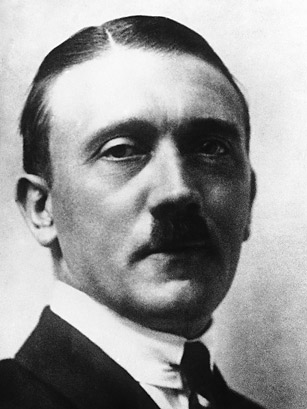
In September 1919, the year after the end of World War I, a German captain named Karl Mayr, who ran a propaganda unit in charge of educating demobilized soldiers in nationalism and scapegoating, received an inquiry from a soldier named Adolf Gemlich about the army’s position on “the Jewish question.” Mayr tasked a young subordinate named Adolf Hitler to answer. The resulting Gemlich letter, as it is known to historians, is believed to be the first record of Hitler’s anti-Semitic beliefs and has been an important document in Holocaust studies for decades.
This week, Rabbi Marvin Hier, the founder and dean of the Simon Wiesenthal Center, announced that the center has obtained the original, signed letter, which had never been publicly displayed. At the letter’s public unveiling in New York City, Hier explained its tortuous journey from Hitler’s own hand to its eventual home at the center’s Museum of Tolerance in Los Angeles.
In April 1945, an American GI named William Ziegler found the letter scattered among other documents in Nuremberg, Germany. Ziegler took the letter home and sold it to a private collector. In 1988, the Wiesenthal Center had the opportunity to buy the letter but was skeptical about whether Hitler could have afforded a typewriter. “He was a nobody; he couldn’t afford anything,” Hier said at the letter’s unveiling. “A typewriter is like today having somebody who can’t afford his meals and he’s waving the latest Apple computer in front of you.”
By the time the center could verify that Hitler had used a German army typewriter, the letter had been sold to another private collector. In 1990, handwriting expert Charles Hamilton Jr., who gained fame for exposing fake Hitler diaries in 1983, authenticated Hitler’s signature on the Gemlich letter.
When the Wiesenthal Center again had an opportunity to purchase the letter this year, it paid $150,000 to make the letter part of its collection. “We do not want to make a market for memorabilia, but this document does not belong in private hands,” Hier said. “It has too much to say to history. It belongs in public hands, and it has found its home at the Museum of Tolerance.”
Few have questioned the importance of the Gemlich letter in understanding Hitler and the Holocaust. It not only provides a look into his beliefs, but reveals early ideas of how he would attempt the systematic extermination of the Jews. “Anti-Semitism — born of purely emotional grounds — will find an expression in the form of pogroms,” Hitler wrote, according to a translation provided by the Wiesenthal Center. “The final goal must be the removal of the Jews. To accomplish these goals, only a government of national power is capable and never a government of national weakness.” Hier highlighted these sentences as being the most important in the letter.
Yet the purchase of such a document, especially at such a high price, has raised questions among historians. “This is not the Magna Carta,” says Michael Marrus, the Chancellor Rose and Ray Wolfe Professor Emeritus of Holocaust Studies at the University of Toronto. “I doubt very strongly that, given everything else we know, the Gemlich letter will change historians’ views about Hitler, or that it will be seen as pushing back Hitler’s genocidal ambitions to a very early date.”
“If this is, indeed, the original of the letter, it’s a curatorial coup for the Wiesenthal Center, but not likely to produce an advance in historical understanding,” Peter Hayes, the Theodore Zev Weiss Holocaust Educational Foundation Professor of Holocaust studies at Northwestern University, adds in an e-mail. “Though the origins of Hitler’s anti-Semitism and the moment of its onset remain matters of dispute among historians, the predominant view is that his hatred of Jews crystallized in the 10 months between Germany’s defeat in November 1918 and the date of this letter, and its appearance in original form isn’t going to make any difference to that view.”